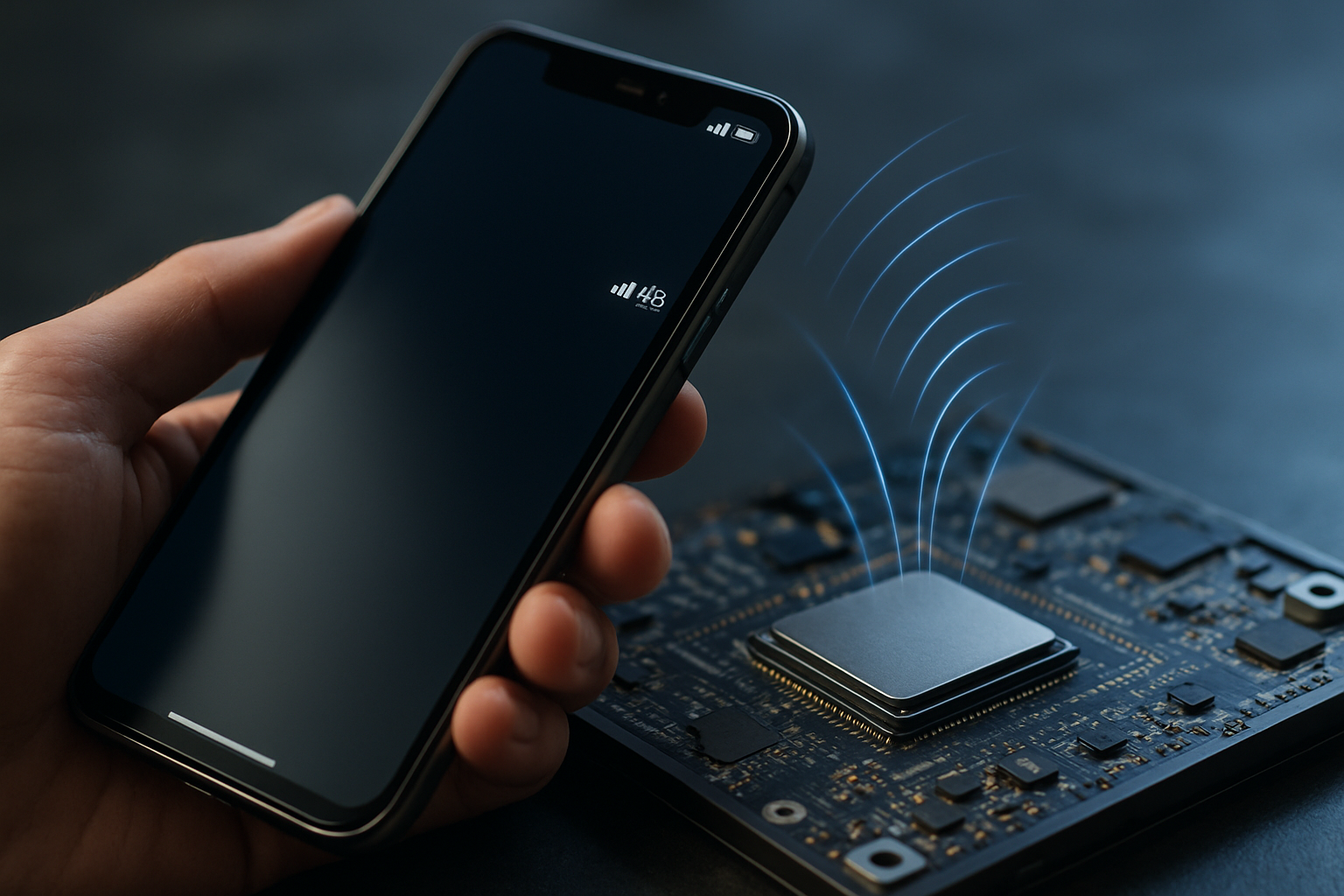Behind Your Smartphone's Magic: The Hidden World of Baseband Processors
The sleek smartphone in your pocket performs an astonishing magic trick every day—transforming invisible radio waves into texts, calls, and data. This digital sorcery happens thanks to a little-known component called the baseband processor. While we obsess over CPU speeds and camera specs, this hidden chip quietly enables the most fundamental function of our phones: connectivity. As wireless networks evolve and security concerns grow, these mysterious processors deserve our attention more than ever.

The Invisible Brain of Your Phone
When you place a call or send a text, your phone’s main processor doesn’t handle the cellular communication directly. Instead, it delegates this task to a separate chip—the baseband processor—which operates as a phone within your phone. This specialized processor runs its own operating system, completely separate from your device’s main OS like Android or iOS. The baseband processor translates the digital information from your phone into radio signals that can be transmitted across cellular networks, and vice versa when receiving data.
What makes baseband processors particularly interesting is their isolation from the rest of your device. They typically run real-time operating systems (RTOS) like ThreadX or REX, which are lightweight and prioritize consistent timing over feature richness. This segregation is intentional—it allows the processor to handle time-sensitive communication tasks without interruption from resource-hungry apps or games running on the main system.
From 2G to 5G: Evolution in Silicon
The journey of baseband processors mirrors the evolution of cellular technology itself. In the 2G era, these chips were relatively simple, handling basic GSM protocols for voice calls and rudimentary data services. As we moved to 3G, baseband processors grew more complex to support higher data rates and more sophisticated encoding schemes.
Today’s 5G-capable baseband processors represent the pinnacle of this evolution. Companies like Qualcomm with its Snapdragon X65 modem-RF system and MediaTek with its Helio M70 5G modem have developed incredibly sophisticated systems that must simultaneously support legacy networks while handling the complex beam-forming and millimeter wave technologies of 5G. These modern baseband chips must process signals across an unprecedented range of radio frequencies, from low-band 600MHz signals to millimeter wave bands above 24GHz.
The increasing complexity has led to interesting market dynamics. While many smartphone manufacturers use third-party systems like Qualcomm’s, others like Apple and Samsung have invested heavily in developing their own baseband technology to gain competitive advantages in battery efficiency and performance.
The Security Blindspot
Perhaps the most concerning aspect of baseband processors is their security implications. These chips represent one of the most significant attack surfaces on modern smartphones, yet receive relatively little scrutiny from the security community. The reason is accessibility—or lack thereof.
Baseband processors run proprietary firmware with limited documentation available to researchers. They operate on the “black box” principle, with manufacturers keeping their inner workings secret. This lack of transparency has led security experts to label them the “Achilles’ heel” of smartphone security.
The concerns aren’t merely theoretical. In 2016, researchers demonstrated how vulnerabilities in baseband processors could allow attackers to execute code remotely simply by sending specially crafted SMS messages to a target phone. More recently, security firms have identified vulnerabilities that could potentially allow attackers to monitor calls or intercept data without the user’s knowledge.
The closed nature of baseband systems also raises privacy concerns. These processors have direct access to your phone’s microphone and can potentially be used for surveillance if compromised—all while operating independently from the main OS’s security protections.
The Industry’s Secret Battlefield
Baseband processors represent a significant portion of smartphone manufacturing costs, with prices ranging from $15 to $45 per chip depending on capabilities. This has created an intensely competitive market dominated by a handful of players—Qualcomm, MediaTek, Samsung, and until recently, Huawei’s HiSilicon.
The competitive landscape shifts dramatically with each network generation. Qualcomm has maintained leadership through multiple generations with its Snapdragon modem lineup, but competitors are always nipping at its heels. Apple’s acquisition of Intel’s modem business for $1 billion in 2019 signaled the company’s intention to develop its own baseband technology, potentially disrupting the market further.
The baseband market is also heavily influenced by geopolitics. The U.S. restrictions on Huawei effectively removed one of the industry’s most innovative players from the global market. Meanwhile, countries are increasingly scrutinizing foreign-made baseband technology over concerns about potential backdoors and national security.
The Future of Connectivity
As we look toward 6G and beyond, baseband processors face new challenges. Future networks will likely demand even more sophisticated signal processing capabilities while simultaneously requiring greater energy efficiency. The push toward AI at the edge may also transform baseband processors, potentially incorporating machine learning to optimize signal quality and network selection in real-time.
Integration trends continue as well. While baseband processors have historically been separate chips, the industry is moving toward system-on-chip designs that incorporate baseband functionality alongside the main processor. Qualcomm’s integrated approach has proven successful, though some manufacturers still prefer discrete solutions for flexibility and performance reasons.
Perhaps the most intriguing development is the potential for open baseband initiatives. Projects like OsmocomBB aim to create open-source baseband implementations, though they remain far from commercial viability. If successful, such efforts could transform the security landscape by bringing much-needed transparency to this critical component.
The humble baseband processor may never get the spotlight like the latest camera sensor or display technology, but it remains the essential bridge between our digital lives and the physical networks that connect us. As wireless technology continues evolving, these unsung heroes of connectivity deserve more recognition—and scrutiny—than they currently receive.





